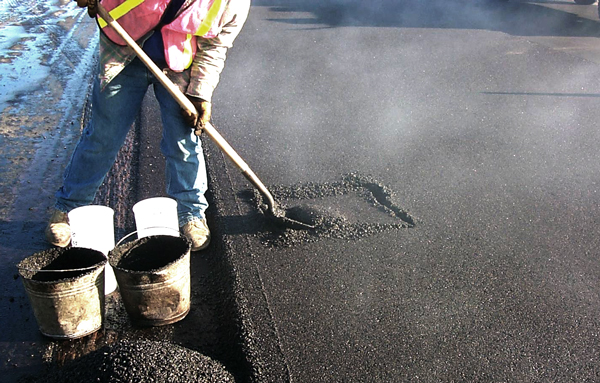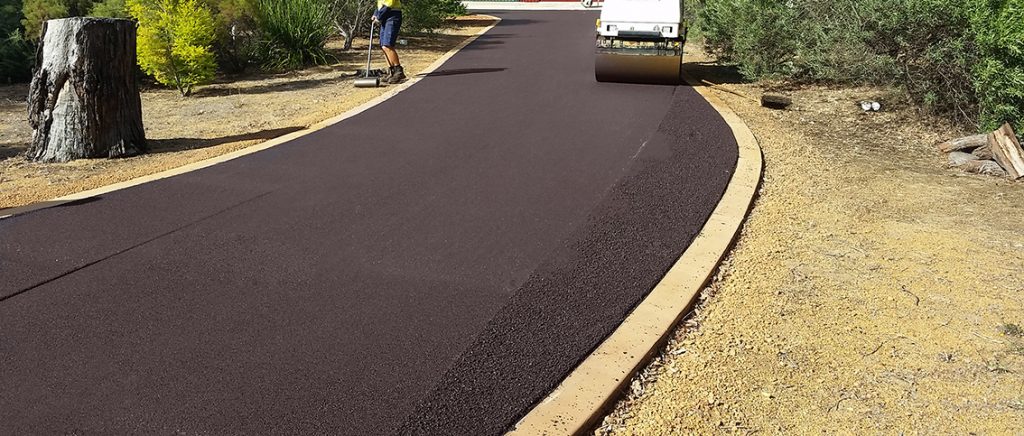Reimagine Your Room: Hot Mix Asphalt Paving for Angled Parking Lot Projects
Reimagine Your Room: Hot Mix Asphalt Paving for Angled Parking Lot Projects
Blog Article
Opening the Keys of Hot Mix Asphalt Technology
Discovering the midsts of hot mix asphalt technology reveals a world where precise solutions and careful processes assemble to shape our roadways and infrastructure. The blend of aggregates, fillers, and binders isn't merely a building and construction task yet a calculated orchestration of sturdiness and efficiency.
Value of Warm Mix Asphalt
Warm Mix Asphalt plays an important function in modern facilities development because of its resilience and cost-effectiveness. As one of the most typically utilized paving product for roadways, highways, and parking area, Warm Mix Asphalt provides a series of benefits that contribute to its relevance in building tasks. One key advantage is its capacity to endure hefty website traffic lots and extreme weather, providing a trustworthy and durable surface for transportation networks. Furthermore, Warm Mix Asphalt is cost-effective in both preliminary building and construction and lasting maintenance, making it a preferred option for several framework projects.
The toughness of Warm Mix Asphalt originates from its make-up, which consists of accumulations, binder, and filler products that are meticulously picked and blended to fulfill details performance requirements. This precise combination causes a versatile and strong pavement that can endure constant usage without substantial damage. Additionally, Hot Mix Asphalt is 100% recyclable, further enhancing its sustainability and ecological advantages. In general, the relevance of Warm Mix Asphalt in facilities growth can not be downplayed, as it proceeds to be a cornerstone of modern-day building and construction practices.
Parts of Asphalt Mixes
The composition of asphalt blends consists of very carefully picked accumulations, binder, and filler materials that are essential for accomplishing details efficiency requirements. Aggregates are the main part of asphalt mixes, offering stamina and security. The binder, commonly bitumen or asphalt cement, holds the aggregates together and provides versatility and longevity to the mix.
The mix and proportion of these components play a significant function in figuring out the top quality and efficiency of the asphalt mix. Designers carefully develop the mix to satisfy certain demands, thinking about aspects like website traffic quantity, environment conditions, and pavement life expectancy. Correct option and harmonizing of accumulations, binder, and fillers are necessary for producing long lasting, resilient asphalt pavements.
Mixing and Production Methods

Once the aggregates are chosen, the binder, typically asphalt concrete, is added to bind the materials together. The binder's high quality and amount dramatically influence the mix's resistance, toughness, and adaptability to environmental elements. Furthermore, fillers like hydrated lime or Rose city concrete might be included to enhance specific characteristics of the asphalt mix, such as its workability or moisture resistance.
During manufacturing, the accumulations and binder are heated up, usually between 250-325 ° F(121-163 ° C ), to help with mixing and ensure correct layer of the accumulations. The mixing process has to be detailed to accomplish a homogeneous mixture that advertises the desired efficiency features of the asphalt. Different techniques, such as set mixing or drum mixing, are used to accomplish premium and consistent asphalt blends for building projects.
Variables Impacting Asphalt Performance
Variables influencing asphalt efficiency include a series of variables that influence the longevity, durability, and overall high quality of asphalt pavements. One crucial element is the top quality of materials made use of in the asphalt mix. The type and resource of accumulations, the Visit Website binder top quality, and the ingredients all play a significant duty in identifying the efficiency of the asphalt pavement. The gradation of accumulations is important as it influences the mix's resistance, workability, and stability to rutting and splitting.

Environmental problems likewise influence asphalt efficiency. Temperature variants, moisture seepage, and traffic lots can all impact the architectural integrity of the pavement. Layout considerations, such as sidewalk thickness and drainage, are necessary in ensuring the long-lasting efficiency of the asphalt pavement. By very carefully considering these specialists, variables and engineers can maximize asphalt performance and enhance the service life of pavements.
Lasting Practices in Asphalt Innovation

In addition, the advancement of warm-mix asphalt (WMA) innovations has acquired traction recently. WMA more information enables the manufacturing and placement of asphalt mixes at reduced temperature levels compared to traditional hot-mix asphalt, resulting in lowered power consumption and greenhouse gas emissions. The usage of porous asphalt blends can assist mitigate stormwater drainage problems by allowing water to infiltrate through the sidewalk and into the ground, advertising natural water purification and charge procedures. By carrying out these sustainable methods, the asphalt industry can add to building an extra eco-friendly and resistant facilities network.
Final Thought
In conclusion, hot mix asphalt innovation plays a critical role in modern infrastructure advancement because of its longevity and cost-effectiveness. By very carefully stabilizing parts, using correct blending strategies, and taking into consideration various factors, engineers can create top quality asphalt mixes that endure rush great site hour loads and harsh climate condition. Embracing lasting techniques, such as making use of recycled products and warm-mix modern technologies, even more enhances the environmental kindness of asphalt modern technology.
Mixing and production strategies in warm mix asphalt innovation involve the precise mix and handling of aggregates, binder, and fillers to develop a sturdy and high-performance asphalt mix.Aspects influencing asphalt efficiency incorporate a range of variables that influence the toughness, durability, and overall quality of asphalt sidewalks. Sustainable practices in asphalt modern technology include various campaigns aimed at lowering the ecological impact of asphalt manufacturing and paving processes. By including reclaimed asphalt sidewalk (RAP) and recycled asphalt shingles (RAS) right into new asphalt blends, the market can significantly lower the consumption of raw products and energy, while additionally decreasing land fill waste.
WMA allows for the manufacturing and placement of asphalt blends at lower temperature levels compared to standard hot-mix asphalt, resulting in decreased power consumption and greenhouse gas discharges.
Report this page